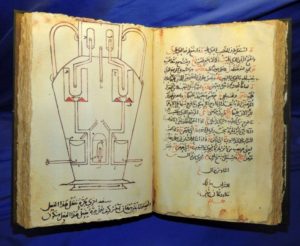
Today, even though there is no part of this library left, there was a time when it used to be a big intellectual powerhouse of Baghdad. Especially in the Islamic Golden Age, it used to speak. This was the center where modern Arabic numbers from Common Zero were born.
It was founded in the late 8th century as a private collection of the Khalifa Harun al-Rashid but after about 30 years it was transformed into a public education center. The name ‘Center of Knowledge’ seems to have drawn scientists from all over the world to Baghdad at that time.
Actually, Baghdad was a big and vibrant center of intellectual curiosity these days. It was also an important center of freedom of expression (here Muslim, Jewish and Christian scholars, that is, everyone was allowed to study).
Its archive was as large in size as it is today, the British Library in London or the Bibliothèque Nationale in Paris.
Math center
Bait al Hikma or the house of knowledge had become such a center of study of humanities and science in those days, which was unmatched. Here geology, philosophy, literature and art were studied along with all the science subjects like mathematics, astronomy, medicine, chemistry. Some other subjects like alchemy and astrology were also the study centers.
Looking for the legacy of Bait Al Hikma
Jim Ali-Khalili, professor of physics at the University of Surrey, says, “What should matter more to us is not where this center of knowledge was or how it was made, but more interesting is the history of scientific ideas that flourished there. Our What is more curious is how these ideas proceeded.
Actually, to search for the legacy of mathematics of Bait Al Hikma, one has to go back a little in history.
During the first few hundred years before the end of the Italian Renaissance, the only person considered synonymous with mathematics in Europe was Leonardo the Pisa. He was posthumously known as Fibonacci. The Italian mathematician, born in 1170, had his early education at Bugia, a trade center on the Barberi coast in Africa (coastal North Africa).
Fibonacci moved to the Middle East in the early years of his second decade. He came here inspired by the ideas that went through India to the western countries via Persia. Returning to Italy, Fiboneki published Liber Abbaci. It was one of the earliest publications of the Hindu-Arabic numeracy system in Western countries Islamic.
Libre Abaki was published in 1202.
But by that time, few intellectuals knew about Hindu-Arabic numbers. Merchants and scholars of Europe still used Roman numbers Islamic. This made multiplication and division complex for them. (Just look at MXCI multiplied by LVII!)
It requires a lot of imagination to create an image of this great center of knowledge in mind (you can imagine a fortress shown in Game of Thrones or a study center like the library of hogwarts in Harry Potter films).
Also Read: TIGER WOODS ACCIDENT

















































